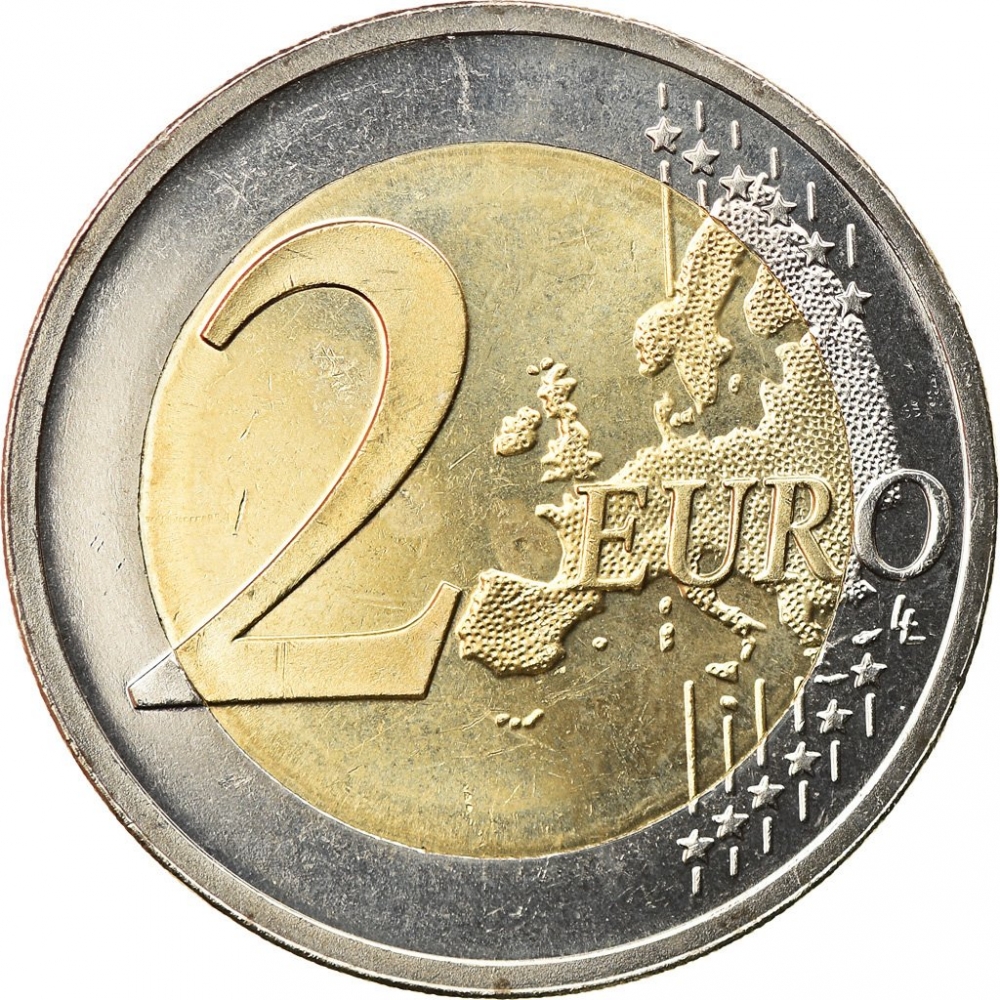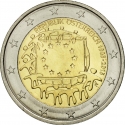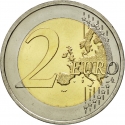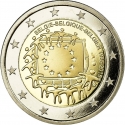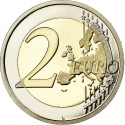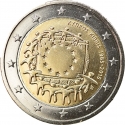You are about to finish your registration. Please check your mailbox (including spam folder). There should be a letter with a confirmation link. Check setting to make sure that your e-mail address is correct.
Send letter againDescription
In July 2015, the 19 euro-area countries jointly issued a commemorative euro coin celebrating 30 years of the flag of Europe. Regardless of the country, it bears the same design on the national side, normally reserved for a motif specific to that country.
This is the fourth time the euro-area members have decided to collectively issue a commemorative coin: The first was in 2007 to celebrate the 50th anniversary of the Treaty of Rome, the second time was in 2009 when sixteen countries commemorated 10 years of the EMU and the third time in 2012 to mark 10 years of euro cash.
A professional jury selected five coin designs among the 62 designs submitted by Euro area mints. Euro-area citizens and residents were invited to select the winning design by public web-voting until 27 May 2015. The winning design of the online vote was by the hand of Georgios Stamatopoulos from the Bank of Greece.
Obverse

|
In the middle, a flag is displayed as a symbol that unites people and cultures with shared visions and ideals for a better common future. Twelve stars that morph into human figures are embracing the birth of a new Europe. At the top, in a semi-circle, are the issuing country and the years. Under the first figure the initials of George Stamatopoulos, the designer. The outer ring contains the twelve stars of the European Union. EESTI 1985-2015 |
|---|---|
Reverse

|
A geographical map of Western Europe spans the outer ring and inner core on the right side of the coin. The inscription 2 EURO is superimposed over the map of Europe, with the numeral “2” located in an open field representing the eastern Atlantic Ocean. 2 EURO |
| Edge |
ESTONIA in Estonian upright and inverted. The height of the letters and symbols in the edge text is slightly smaller than on the earlier two-euro circulation coins. EESTI ○ EESTI ○ |
Characteristics
| Type | Commemorative Issue (Circulating) |
| Material | Bi-Metallic |
| Ring | Cupronickel |
| Center | Nickel Brass |
| Weight | 8.5 g |
| Diameter | 25.75 mm |
| Thickness | 2.2 mm |
| Shape |
|
| Alignment | Medal |
| Mint |
Lithuanian Mint (LMK)
|
Related coins
30th Anniversary of the Flag of Europe
30th Anniversary of the Flag of Europe
30th Anniversary of the Flag of Europe

